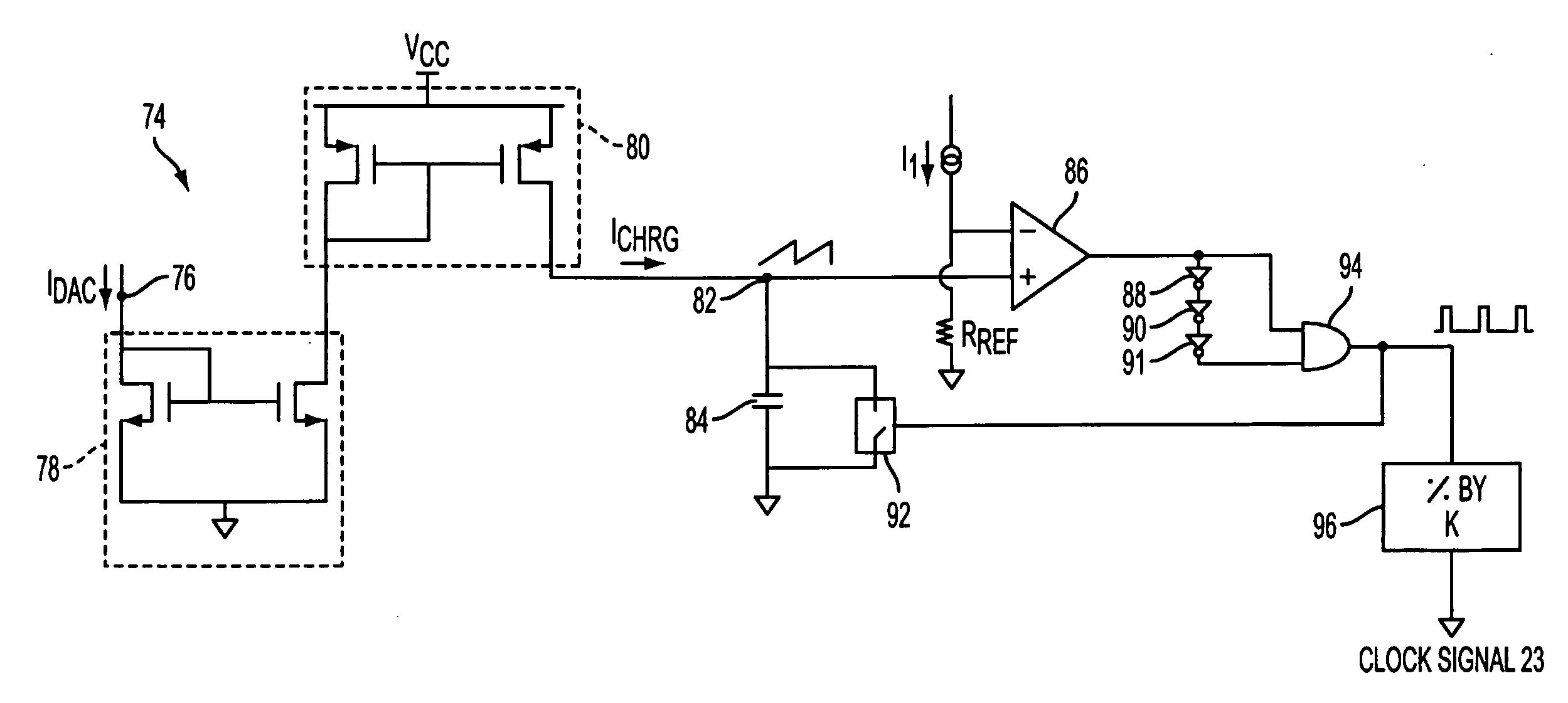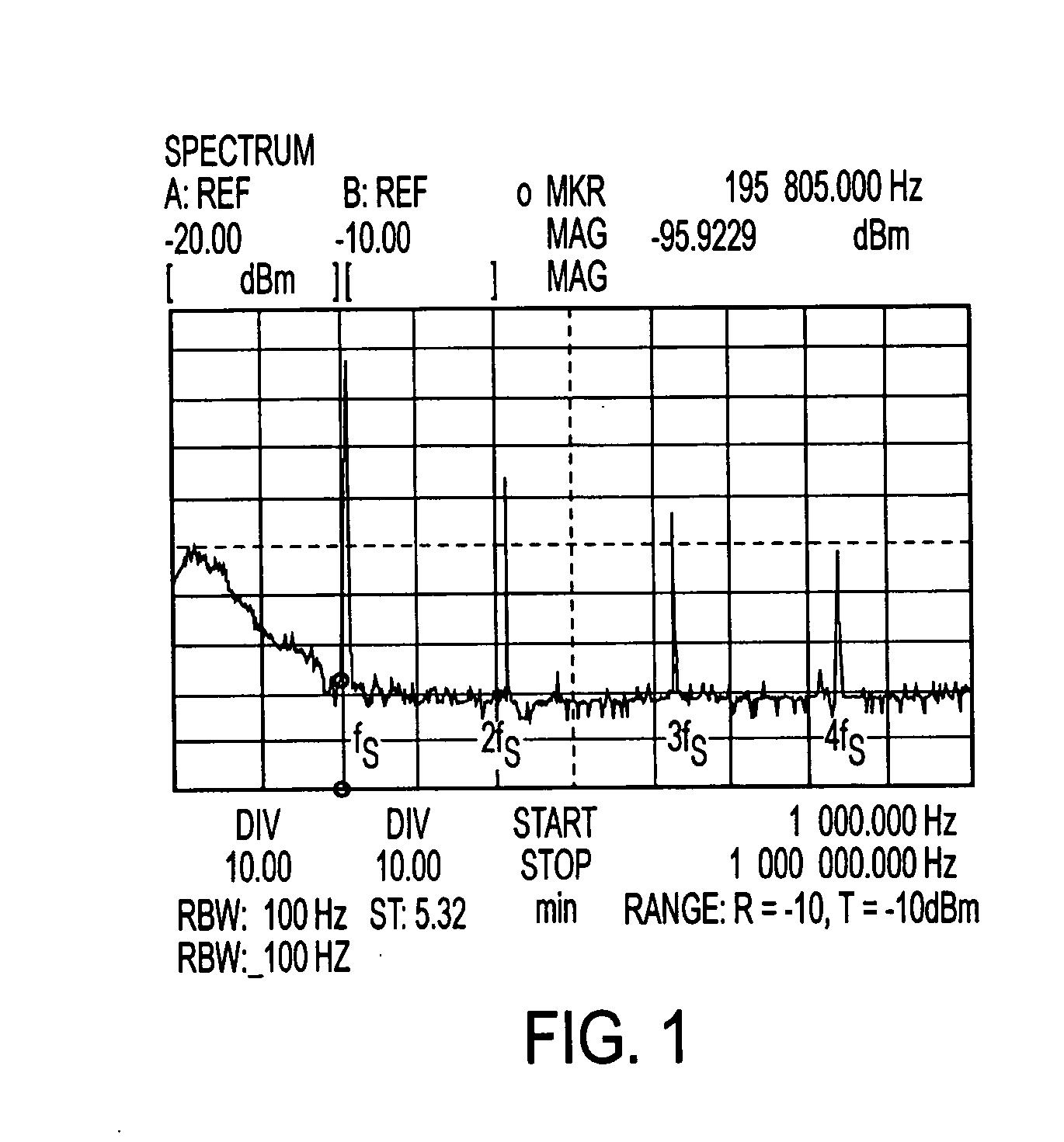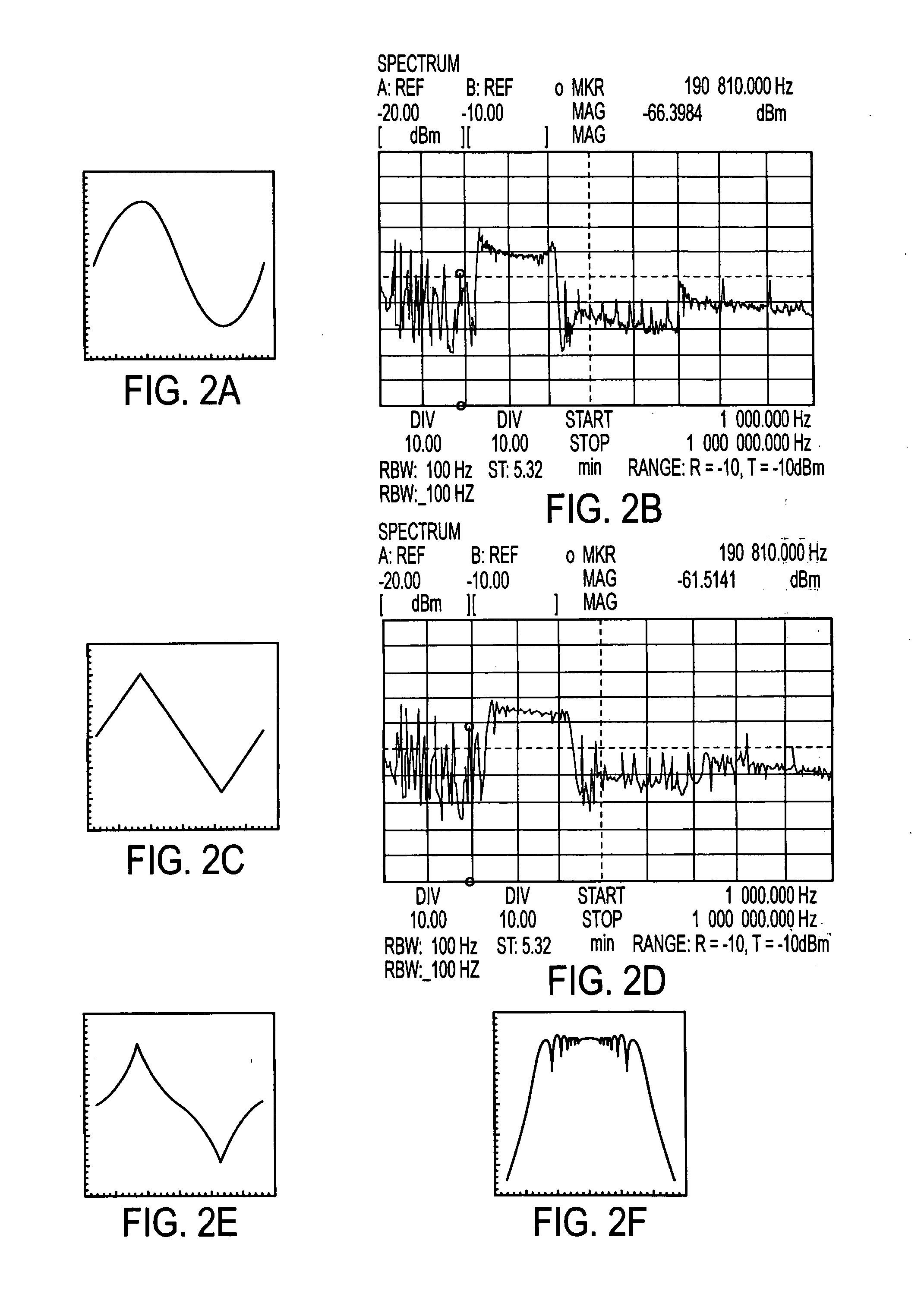Methods and circuits for frequency modulation that reduce the spectral noise of switching regulators
- Summary
- Abstract
- Description
- Claims
- Application Information
AI Technical Summary
Benefits of technology
Problems solved by technology
Method used
Image
Examples
Example
[0075] In a first embodiment of frequency modulation circuit 18 of the present invention depicted in FIGS. 9 and 10, signal generator 20 comprises pseudo-random number generator 24 that supplies digital signals Q0−Qi having a uniform probability density distribution to digital-to-analog converter (“DAC”) 26. Pseudo-random number generator 24 comprises self-feeding shift register 28 having feedback circuit 30. Feedback circuit 30 may comprise logic that accept output signals from register 28 and generates a data signal derived therefrom. That data signal is fed back into the register's DATA_IN input. Although feedback circuit 30 is shown as accepting all signals output by register 28, one of ordinary skill in the art will recognize that feedback circuit 30 also may be configured to accept less signals. In general, only a few bits are needed. One of ordinary skill in the art will recognize that, rather than incorporating logic, feedback circuit 30 also may comprise a memory look-up ta...
Example
[0119] Referring now to FIG. 18, a third embodiment of oscillator 22 is described, in which the oscillator has a linear input-to-output transfer function. Oscillator 186 comprises a ring oscillator having timing capacitor 188 that is charged and discharged by a sourcing current source and a sinking current source (respectively) to generate a clock signal at output node 190. More specifically, to charge timing capacitor 188, oscillator 186 comprises a sourcing current source formed by diode-connected transistors 192 and 194 that respectively are coupled to mirroring transistors 196 and 198. The sourcing current source charges timing capacitor 188 with a current having a magnitude that is proportional to charging current ICHRG. The sinking current source of oscillator 186 is formed by diode-connected transistor 192 and mirroring transistor 200, which together discharge capacitor 188 with a current having a magnitude that is proportional to charging current ICHRG.
[0120] When the sourc...
Example
[0126] Referring now to FIG. 20, a fourth embodiment of oscillator 22 is described, wherein the oscillator has a linear input-to-output transfer function. In contrast to the current-controlled oscillators of FIGS. 13-15 and 18, the frequency of the clock signal generated by oscillator 220 is voltage-controlled. Oscillator 220 comprises amplifier 222 having a feedback loop and current mirror 224 that supplies as much current as needed to servo the inverting input of amplifier 222 at the voltage supplied to the non-inverting input. The servo current then is mirrored by current mirror 224 to generate a proportional current to charge timing capacitor 228. To discharge timing capacitor 228, oscillator 220 comprises comparator 227 that directs switch 229 to short circuit capacitor 228 to ground when it determines that the voltage across the capacitor has reached or exceeded constant reference voltage VREF.
[0127] The amount of current supplied to charge timing capacitor 228, and thus the ...
PUM
 Login to View More
Login to View More Abstract
Description
Claims
Application Information
 Login to View More
Login to View More - R&D
- Intellectual Property
- Life Sciences
- Materials
- Tech Scout
- Unparalleled Data Quality
- Higher Quality Content
- 60% Fewer Hallucinations
Browse by: Latest US Patents, China's latest patents, Technical Efficacy Thesaurus, Application Domain, Technology Topic, Popular Technical Reports.
© 2025 PatSnap. All rights reserved.Legal|Privacy policy|Modern Slavery Act Transparency Statement|Sitemap|About US| Contact US: help@patsnap.com



